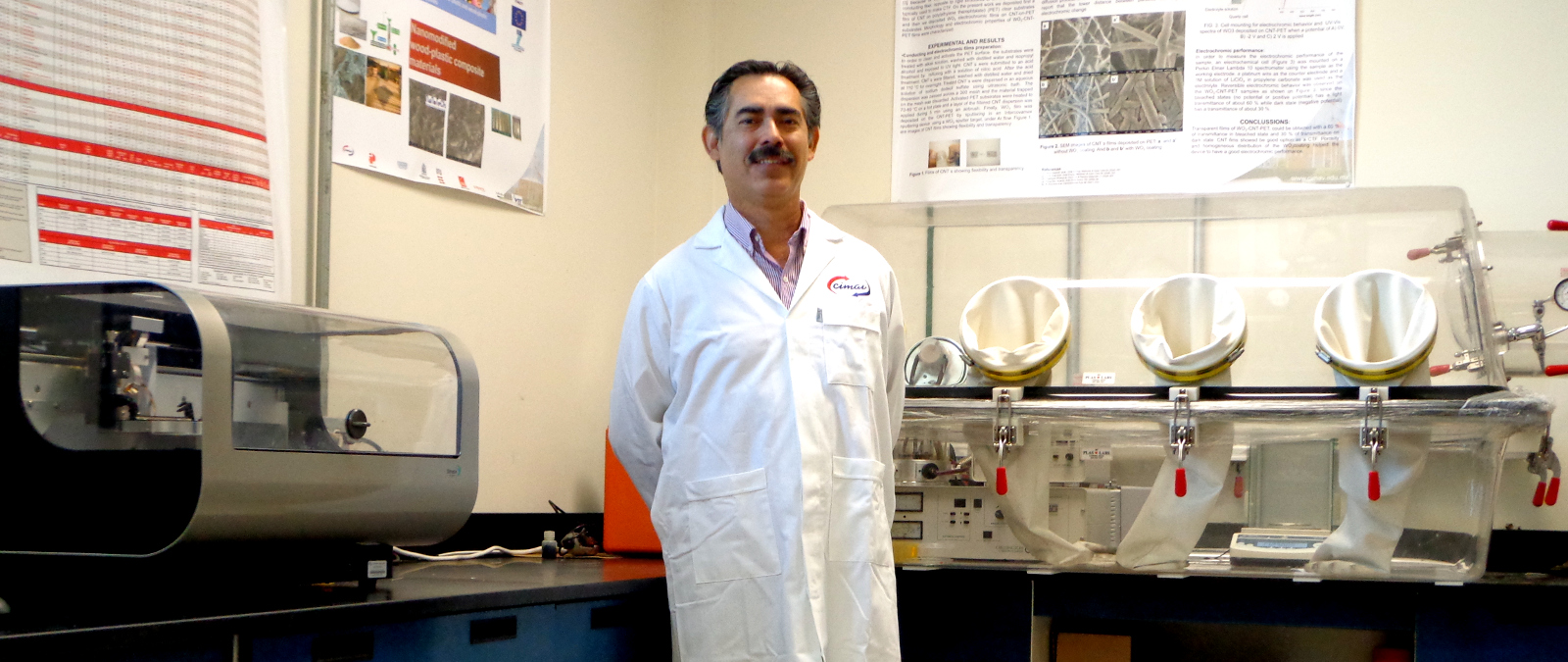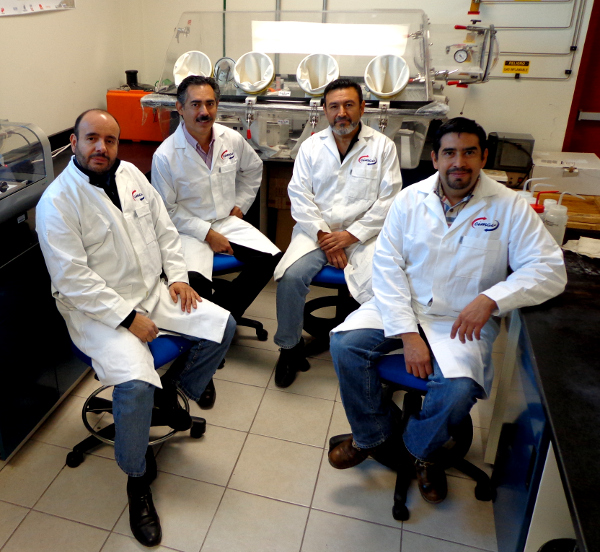Nanostructured materials

| M.C. Manuel Román Aguirre |
| Ing. Luis De la Torre Sáenz |
The Research Center for Advanced Materials counts with a team of specialists that develops projects in nanostructured materials with technological applications such as: artificial photosynthesis, high-performance compound materials, aerogels or carbon nanotubes (CNTs), among others.
Carbon Nanotubes
The interest for carbon nanotubes is due to their unique characteristics, since for instance they show a high electric conductivity that may be higher than copper, the most widely used material for conducting electricity. Their thermal conductivity is higher than most commonly used materials such as metals and polymers. Also their mechanical properties such as resistance to traction and fracture strain are superior than other materials such as stainless steel, with the enormous advantage that a piece of the same volume weighs less than the fifth part if made with carbon nanotubes, and the resistance to traction is at least 15 times higher.
Aerogel Production
Aerogel or solid smoke is a material composed by more than 95% air and the rest is the same material that sand is made of, that is silicon dioxide (SiO2). These characteristics make it an excellent thermal and acoustic insulator with the advantage that it cannot burn.
Our group develops technology to produce aerogels. Recently it was developed a way to obtain aerogel powder without the need of supercritical drying and without the need for a hydrophobic aerogel surface, which until now had been the only alternative to supercritical drying.
Artificial Photosynthesis
In another line of research, the specialists are currently working in the development of photocatalysts (material that accelerates chemical reactions using solar radiation) to transform carbon dioxide (CO2) into a hydrocarbon such as methane or methanol. The use of this technology is a way to avoid the constant emission of greenhouse phases, which is a contribution to minimize the impact of human activity on climate change.
The project is called artificial photosynthesis because it is similar to the process used by plants in which they transform water and CO2 into materials that may be used to produce energy. This research is a megaproject supported by Conacyt.
Nanotechnology manipulates matter at the scale of atoms and molecules. One of the high-impact materials of this discipline is carbon nanotubes, which as their name says, have a tubular structure and a diameter in the scale of a billionth of a meter (1 nm = 10−9 m) and chemically they consist only of carbon and hydrogen.
Worldwide there is an increase on the use of carbon nanotubes. Thanks to their special characteristics they are used in several activities, from research through biomedical to industrial applications.
- Technology for CNTs production
Cimav’s specialists developed the concept of a semi industrial machine for the continuous production of carbon nanotubes, they obtained the patent and they transferred such technology successfully to a private Company in the industrial park located in Monterrey, Nuevo Leon, Mexico.
- Transparent Electrodes
There is a demand for materials that allow light to pass and that may conduct electricity, be flexible, low density and with a simple application, this in order to replace high-cost, rigid and frail materials. In Cimav we have used CNT and polymer/CNT composite films that provide the functionality of an electrode with the advantages mentioned, this way it has been possible to assemble electrochromic windows, solar panels and photoelectrocatalytic panels.
- Metal-based composite materials
Taking into account their high thermal conductivity and mechanical properties, CNT/Aluminum composites have been developed for applications such as heat dissipation in electronic devices and the improvement of mechanical properties of aluminum materials.
The challenge in this development has been the homogeneous dispersion of CNTs in metal and the casting method, with the purpose of obtaining a high-performance material and a low processing cost. For this end it was developed a method for coating CNTs with a metallic film that promotes interaction between the CNT/Metal/Aluminum phases and allows for the dispersion of CNTs at the aluminum’s fusion temperature without the need of a controlled atmosphere with inert gas.
- Study of their toxicity
Although it is true that the relevance of these materials has allowed their application in several different areas, we should also mention that considering the speculations on their toxicity, in Cimav a specialized group of researchers in different disciplines do research to determine the effect of CNTs at the cellular level.
- Biomedical Applications
Due to CNTs’ electric conductivity properties and their structure, the specialists at Cimav, coordinated with scientists from other institutions in the country, investigate the development of biomedical applications such as their use in bioelectric signal sensors for their use as electrodes in ECG records. Their application in the regeneration of inter-neural connections is also studied, using snail neurons as a model, through the record of signals between neurons connected artificially with CNTs. This study could potentially be used as a proposal to develop solutions in diseases such as Alzheimer’s.
- Ceramic-based composite materials
The use of CNTs in combination with ceramic materials has been studied using several sintering techniques for the ceramic matrix and different types of CNTs. The applications being studied include a better biocompatibility of the ceramic matrix for its use in medical implants, and industrial applications where a high-toughness ceramic is required.
